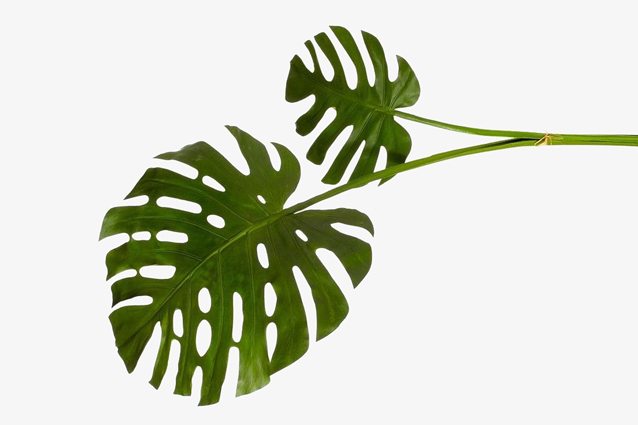
BOTANICA, January 2013
Designers : Andrea Trimachi and Simone Farresin, Formafantasma
Client : Plart Foundation
Curator : Francisco Polo, Pias Aiemsaard
_
Almost as if historians, Studio Formafantasma investigated the pre-bakelite period, discovering
unexpected textures, feelings and technical possibilities offered by natural polymers extracted from
plants or animal-derivatives
‘ Botanica ’ is a commission by Plart, an Italian foundation dedicated to scientific research and technological innovation in the recovery, restoration and
conservation of works of art and design produced in plastic.
Maria Pia Incutti, founder of Plart and Marco Petroni, curator of the project, commissioned the studio to create their own personal interpretation of
polymeric materials.
The perception of plastic materials has drastically changed over time. Initially considered the material of the future, synthetic polymers are now seen as the
symbol of a not anymore exciting oil era. scientific research is increasingly looking to find sustainable alternatives or ways to make plastic biodegradable. In
opposition to this, the Plart Foundation is addresses another necessity with its activities and research: to preserve plastic-based art and design pieces.
The tension between the need to find valid alternatives to an extraordinary material, and to preserve the artworks of the last century underlines how deeply both the qualities and disadvantages of plastic have penetrated into our culture. Most of the objects we use daily are made of plastic, and though the material may take a different form, plastic will remain relevant as we move forward.
With ‘Botanica’ Studio Formafantasma is giving its personal homage to plastic materials by investigating the history of polymers.
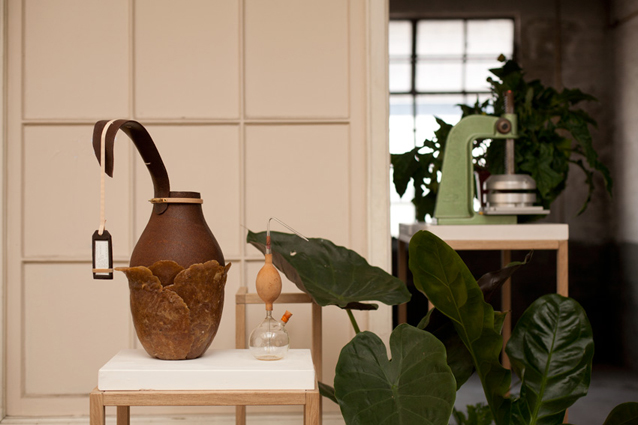
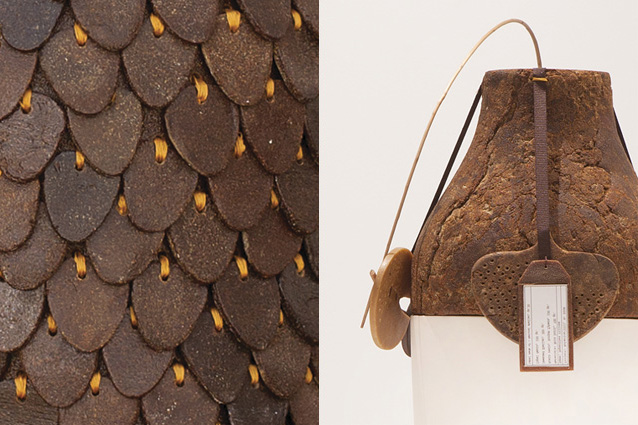
Botany, as a discipline, began with early human efforts to identify edible, medicinal and poisonous plants, making it one of the oldest
sciences . Detail of Botanica vases V and III .
More then two centuries ago plants started to be categorized also for their secretions, a possible source of material. The objects displayed in the ‘Botanica’
collection are designed as if the oil- based era, in which we are living, never took place.
Almost as if historians, Studio Formafantasma investigated the pre-bakelite period, discovering unexpected textures, feelings and technical possibilities
offered by natural polymers extracted from plants or animal-derivatives. The designers researched and hunted for information, digging into the 18th and 19th
centuries, when scientists began experimenting draining plants and animals in search for plasticity.
Rosin, Dammar, Copal (a sub-fossil state of amber), Natural Rubber, Shellac (a polymer extracted from insect excrement that colonize trees) and
Bois Durci (a 19th century material composed of wood dust and animal blood), are amongst others, materials investigated by the studio.
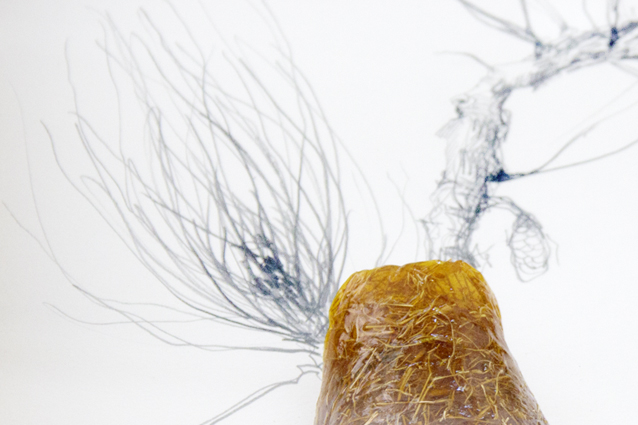
Handdrawing and material sample .
The organic details and plant-like forms of the pieces underline the vegetal and animal origins of the resins, while the palette of colours is based on
natural amber tones in combination with traditional materials such as wood, ceramic and metal.
The natural textures and honey-like colours of the
resins evoke the memory of 20th century bakelite objects, however, the finish and details are somewhat archaic yet contemporary. In ‘Botanica’, plastics
are used as precious details, in an attempt to develop a new post-industrial aesthetic.
Today, we can be said to be moving towards a new post-oil era, the pre-oil era is starting to be globally re discovered in search for alternatives.
Online blogs and archives are constantly collating and updating information challenging consumers to produce their own plastics, while an American university is currently importing Russian dandelion flowers, reigniting the lost tradition of extracting rubber from the plants roots. In line with this attitude, Formafantasma looks to the past as a source of inspiration, while delivering a body of work with a contemporary twist.
_
Botanica is a collection of Vases in a Limited Edition of 12pieces + 2 AP + 1P and is part of the permanent collection at :
MOMA, New York
Metropolitan Museum of Art, New York
Centre national des Arts plastiques ( CNAP ), Paris
Denver Art Museum, Denver
Victoria and Albert Museum, London
Botanica is exclusively available in Miami through Aybar Gallery, in case you are interested in more information dont hesitate to contact us
or visit our shop on line
Photo courtesy : Luisa Zanzani and Voravute Lampsombure
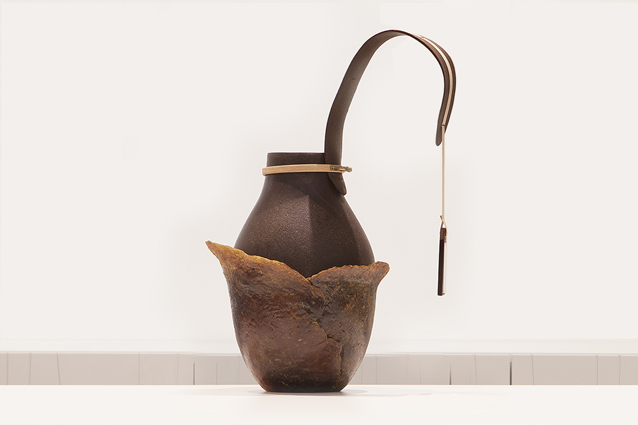
Botanica vase I
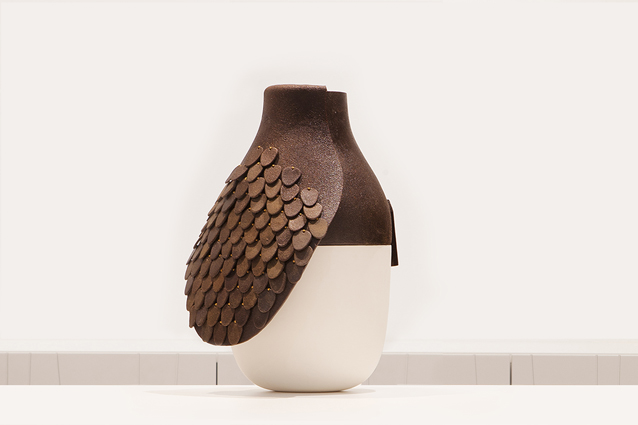
Botanica vase III
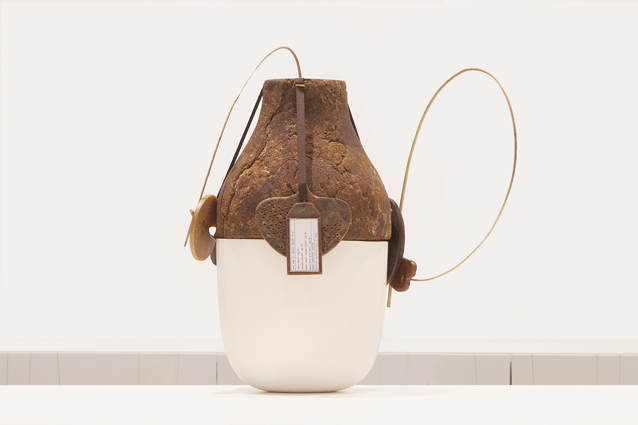
Botanica vase V
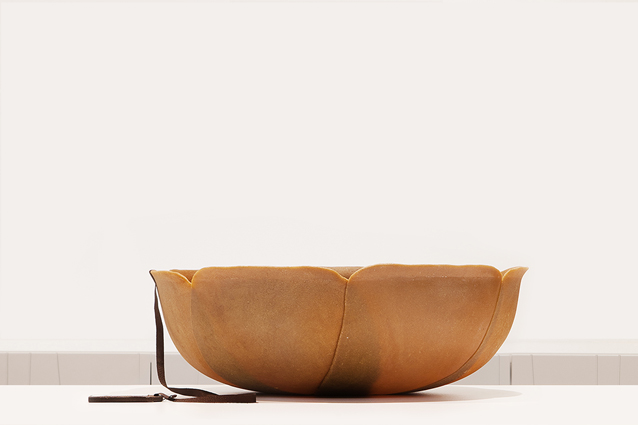
Botanica vase IV orange
